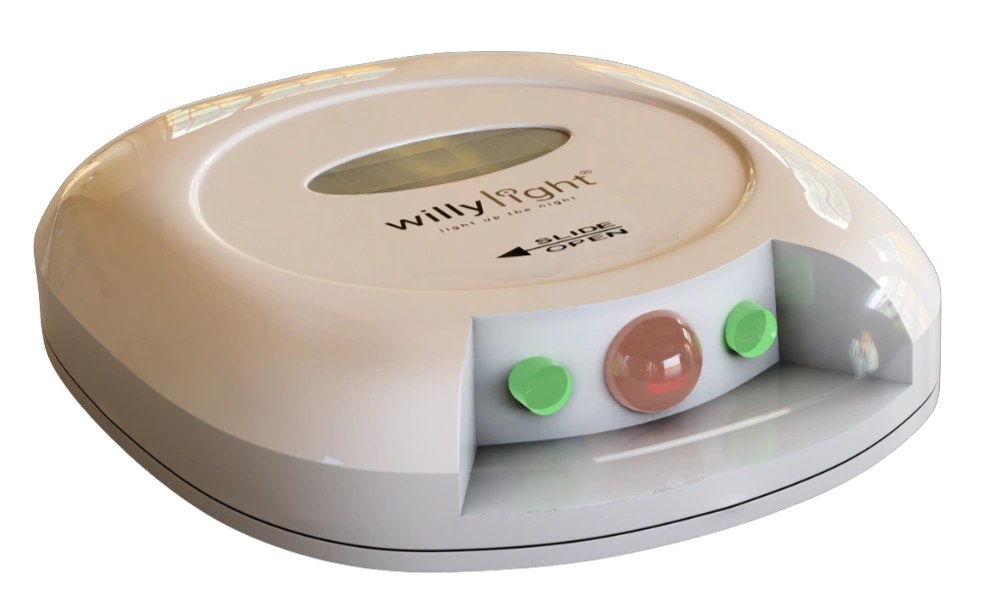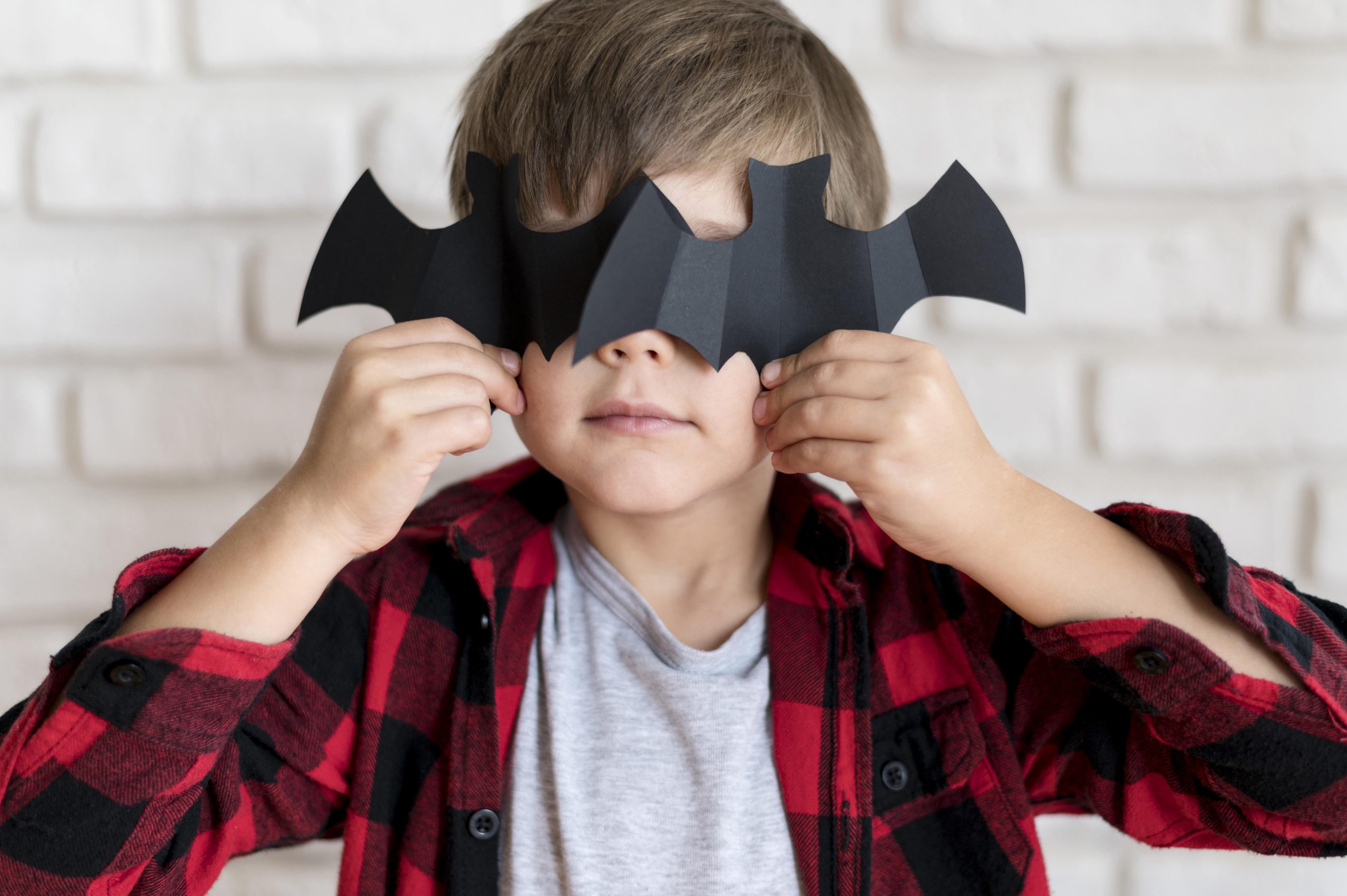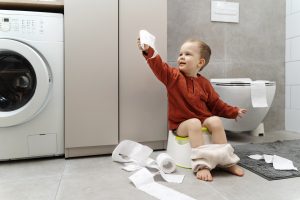
Boys face unique toilet training challenges that require different readiness markers than the standard guidelines suggest. While general readiness signs provide a foundation, boys need additional indicators around spatial awareness, etiquette interest, and multi-position readiness before training begins.
Understanding boy-specific readiness signs helps parents avoid the most common male toilet training pitfalls: starting before aim development, skipping etiquette foundations, and underestimating the complexity of dual-position mastery. Boys who begin training with proper readiness markers often achieve success faster and develop better long-term bathroom habits.
This expert guide reveals the specific readiness indicators that predict successful toilet training for boys, along with optimal timing strategies that set the foundation for both independence and consideration.
Four-year-old Jake had been “toilet trained” for over a year, yet his family still dealt with daily bathroom cleanup, forgotten toilet seats, and constant reminders about aim and etiquette. His parents wondered why their son, who had mastered the basic mechanics of using the toilet, still struggled with the responsibility and consideration aspects of bathroom behavior.
The answer lay in their initial approach: they had started toilet training when Jake showed general readiness signs at 2.5 years old, but had missed the boy-specific indicators that signal readiness for the full spectrum of male bathroom skills – including etiquette, accuracy, and social consideration.
When Jake’s parents finally addressed these missing foundations using visual feedback systems like the Willy Light, everything clicked into place. Within weeks, Jake transformed from a boy who simply used the toilet to one who took pride in complete bathroom responsibility.
This story illustrates why boys need specialized readiness assessment: general toilet training signs predict basic success, but boy-specific markers prevent the pitfalls that create long-term bathroom behavior problems.
Why Boys Need Different Readiness Criteria
The Complexity Factor
Boys face significantly more complex toilet training requirements than girls:
Multi-position mastery: Boys must learn both sitting and standing positions, understanding when each is appropriate Spatial awareness: Accurate aim requires developed spatial reasoning and fine motor control Equipment management: Toilet seat positioning, lifting, and lowering require planning and consideration Etiquette foundations: Boys need explicit teaching about toilet seat management and bathroom courtesy from the beginning
Common Male Toilet Training Pitfalls
Starting boys’ toilet training without proper readiness assessment leads to:
The “basics only” trap: Boys learn to use the toilet but never develop accuracy, etiquette, or consideration skills Extended mess periods: Months or years of daily cleanup because foundational skills weren’t established early Resistance to refinement: Boys who master basic toileting often resist later attempts to teach accuracy and etiquette Family conflict development: Poor bathroom habits create ongoing household tensions and arguments that could have been prevented
The Boy-Specific Advantage
When boys begin training with appropriate readiness markers, they typically:
- Master both positions more quickly
- Develop accuracy and etiquette simultaneously
- Show pride in complete bathroom responsibility
- Avoid the common pitfalls that create long-term problems
The 12 Boy-Specific Readiness Signs
Foundation Signs (Must Be Present)
Sign #1: Extended Dry Periods with Awareness
What to look for: Your son stays dry for 2+ hours AND shows awareness of his bladder state.
Boy-specific considerations: Boys often develop bladder control later than girls but may show stronger awareness when it develops. Look for him saying things like “I don’t need to go” or “my diaper is still dry.”
Timeline indicator: This typically develops between 2.5-3.5 years for boys.
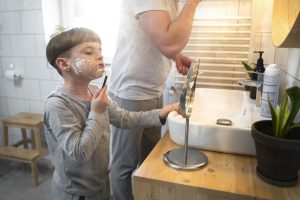
Sign #2: Physical Stability and Coordination
What to look for: Steady standing, ability to balance on one foot briefly, and coordination for tasks like putting on shoes.
Why it’s crucial for boys: Standing urination requires significant balance and coordination. Boys lacking these skills will struggle with aim and may develop poor habits to compensate.
Assessment: Can your son stand still for 30+ seconds without support? Can he walk in a straight line? These indicate the physical readiness needed for accurate standing position.
Sign #3: Multi-Step Instruction Following
What to look for: Consistently following 3-4 step instructions in daily activities.
Boy-specific importance: Boys’ toilet routine is more complex than girls’ – they need to decide position, manage seat, aim accurately, clean up, and restore bathroom condition. This requires strong instruction-processing skills.
Test examples: “Please get your shoes, put them on, and meet me by the door” or “Pick up your toys, put them in the basket, and wash your hands.”
Spatial and Motor Readiness Signs
Sign #4: Spatial Awareness Development
What to look for: Your son demonstrates understanding of spatial relationships – putting toys “in” containers accurately, building blocks with precision, or throwing balls toward targets.
Critical for boys: Aim accuracy depends entirely on spatial awareness and the ability to judge distance and trajectory.
Real-world examples:
- Successfully throwing items into trash cans
- Stacking blocks with increasing precision
- Understanding positional words (in, on, under, beside)
- Pouring water from one container to another with minimal spills
Sign #5: Fine Motor Control for Precision Tasks
What to look for: Ability to control small movements precisely – using utensils effectively, drawing basic shapes, or manipulating small objects.
Why it matters: Accurate aim and proper wiping require fine motor control that many boys develop later than other skills.
Assessment activities:
- Drawing circles or lines with intention
- Using scissors to cut paper
- Threading large beads or pasta
- Successfully using fork and spoon without major mess
Sign #6: Interest in Target Practice and Accuracy Games
What to look for: Natural enjoyment of throwing, shooting, or aiming activities – even simple ones like tossing socks into a hamper.
Boy-specific indicator: This interest often predicts readiness for aim training and suggests the spatial awareness necessary for toilet accuracy.
Encouraging signs:
- Enjoyment of any targeting activities
- Persistence when missing targets initially
- Natural competitiveness about accuracy
- Interest in “hitting” or “making it in” various containers
Social and Etiquette Readiness Signs
Sign #7: Observation of Bathroom Etiquette
What to look for: Your son notices and comments on bathroom-related behaviors – toilet seat position, flushing sounds, or family members’ bathroom routines.
Critical boy-specific marker: This observation indicates the awareness necessary for learning proper toilet seat etiquette and consideration for others.
Examples of etiquette awareness:
- Noticing when toilet seats are up or down
- Commenting on bathroom cleanliness or mess
- Asking questions about bathroom procedures
- Showing interest in visual cues like the Willy Light that indicate proper bathroom behavior
Sign #8: Understanding of Cause and Effect
What to look for: Your son grasps that his actions have consequences and can predict outcomes of behaviors.
Why it’s essential for boys: Understanding that seat position, aim accuracy, and cleanup affect other family members is crucial for developing bathroom consideration.
Assessment examples:
- Understanding that spills need cleaning
- Recognizing that noise affects others
- Connecting actions with natural consequences
- Showing concern when his behavior impacts family members
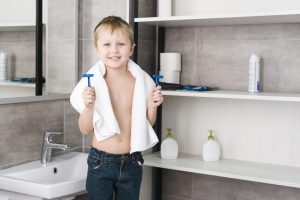
Sign #9: Pride in “Big Boy” Responsibilities
What to look for: Your son seeks out age-appropriate responsibilities and takes pride in doing things independently and correctly.
Boy-specific importance: Boys who show pride in other responsibilities are more likely to embrace the complete set of bathroom responsibilities, not just basic toilet use.
Indicators of responsibility readiness:
- Wanting to help with household tasks
- Taking pride in neat appearances or organized spaces
- Showing concern about doing things “the right way”
- Seeking approval for responsible behavior
Advanced Readiness Signs
Sign #10: Interest in Male Role Models’ Bathroom Behavior
What to look for: Your son shows curiosity about how fathers, older brothers, or other male figures handle bathroom activities.
Why it matters: Boys need male modeling for proper bathroom behavior, and interest in this modeling indicates readiness to learn male-specific skills.
Examples:
- Asking to accompany dad to the bathroom
- Questioning differences between male and female bathroom behavior
- Interest in “boy” vs. “girl” bathroom equipment or techniques
- Natural imitation of male bathroom behaviors
Sign #11: Response to Visual Feedback Systems
What to look for: Your son notices and responds to visual cues in his environment – lights, colors, signals, or indicators that communicate information.
Boy-specific advantage: Boys often respond exceptionally well to immediate visual feedback. Interest in visual systems like the Willy Light often indicates readiness for the feedback-based learning that makes boys’ toilet training most successful.
Visual responsiveness indicators:
- Noticing traffic lights, signs, or environmental cues
- Responding appropriately to visual signals
- Interest in cause-and-effect visual systems
- Engagement with light-based or color-coded information
Sign #12: Frustration with Current Bathroom Limitations
What to look for: Your son expresses dissatisfaction with diaper dependence or shows interest in bathroom independence.
Final readiness indicator: This internal motivation often appears when other readiness signs align and indicates emotional readiness for the challenges of complete bathroom training.
Signs of readiness frustration:
- Complaining about diaper changes
- Expressing desire to use “big boy” toilets
- Showing embarrassment about diaper dependence
- Asking when he can use the bathroom like older family members
Age-Based Readiness Timelines for Boys
18-24 Months: Pre-Readiness Observation Period
Typical developments:
- Beginning bladder awareness
- Basic following of simple instructions
- Early spatial awareness development
Action steps:
- Introduce bathroom vocabulary
- Allow observation of bathroom activities
- Begin reading toilet training books
- Watch for emerging signs without pressure
Avoid: Active toilet training attempts at this age for most boys
2-2.5 Years: Early Readiness Assessment
Potential developments:
- Extended dry periods beginning
- Interest in bathroom activities
- Basic coordination improvements
- Early instruction-following abilities
Action steps:
- Formal assessment of readiness signs
- Introduction of potty chair for familiarity
- Casual bathroom visits for observation
- Continue building foundational skills
Key consideration: Most boys aren’t fully ready during this period, but preparation can begin
2.5-3 Years: Common Readiness Window
Typical developments:
- Multiple readiness signs appearing
- Physical coordination reaching necessary levels
- Spatial awareness improving rapidly
- Interest in independence increasing
Action steps:
- Comprehensive readiness assessment
- Begin active training if 8+ signs present
- Focus on sitting position initially
- Introduce visual feedback systems for immediate learning support
Training approach: Full implementation when readiness criteria met
3-3.5 Years: Peak Readiness Period
Common developments:
- All foundational skills typically present
- Strong motivation for independence
- Physical abilities supporting complex skills
- Social awareness of bathroom expectations
Action steps:
- Intensive toilet training implementation
- Both sitting and standing position training
- Etiquette and accuracy emphasis from start
- Consistent expectation enforcement
Advantage: Boys starting at optimal readiness often complete training quickly
3.5+ Years: Later Readiness
Considerations:
- Often late starters who progress rapidly
- May need gentle pressure due to social expectations
- Typically have advanced cognitive abilities supporting learning
- May require motivation beyond basic independence
Approach: Comprehensive training with emphasis on pride and responsibility
The Seat Etiquette Readiness Assessment
Critical Etiquette Markers
Boys ready for complete toilet training should demonstrate:
Environmental awareness: Noticing bathroom conditions and cleanliness standards Social consideration: Understanding that shared spaces require respectful behavior
Visual responsiveness: Responding to cues about proper bathroom behavior Responsibility acceptance: Willingness to maintain and restore bathroom condition
Testing Etiquette Readiness
The bathroom observation test: Take your son into various bathrooms and observe:
- Does he notice seat position differences?
- Does he comment on cleanliness or mess?
- Does he show interest in “fixing” or “cleaning” things?
- Does he respond to visual cues about proper behavior?
The responsibility assessment: In other areas of life, does your son:
- Clean up his own messes when reminded?
- Show concern about maintaining shared spaces?
- Take pride in doing things “the right way”?
- Respond positively to tools that help him succeed?
Boys who pass these assessments are ready for etiquette training alongside basic toilet skills.
Common Boy-Specific Readiness Mistakes
Mistake #1: Using Girl Timelines and Expectations
The problem: Expecting boys to show readiness at the same age and in the same ways as girls typically do.
The reality: Boys’ readiness often develops 3-6 months later and requires different markers, especially around spatial awareness and etiquette understanding.
The solution: Use boy-specific readiness criteria and timelines rather than general guidelines.
Mistake #2: Ignoring Spatial Awareness Requirements
The problem: Beginning toilet training before boys develop the spatial awareness necessary for accuracy.
The consequence: Months of mess, cleanup, and frustration that could be avoided.
The solution: Wait for clear spatial awareness development before attempting standing position training.

Mistake #3: Skipping Etiquette Readiness Assessment
The problem: Starting basic toilet training without ensuring boys are ready to learn consideration and responsibility simultaneously.
The consequence: Boys who can use the toilet but never develop proper bathroom habits or consideration for others.
The solution: Assess and build etiquette readiness before beginning intensive training.
Mistake #4: Missing Visual Learning Opportunities
The problem: Not recognizing boys’ responsiveness to visual feedback systems and immediate cues.
The missed opportunity: Boys often learn faster and more thoroughly with visual support systems that provide immediate feedback.
The solution: Incorporate visual feedback tools like the Willy Light early in the process to support rapid skill development.
Creating Readiness When Signs Are Developing
Building Spatial Awareness
Activities that help:
- Target practice with soft balls and large containers
- Building blocks and stacking games
- Pouring practice with water and containers
- Simple throwing and catching games
Developing Etiquette Awareness
Strategies that work:
- Bathroom observation visits with commentary
- Reading books about bathroom courtesy and consideration
- Pointing out good and poor bathroom behavior examples
- Introducing visual feedback systems that make etiquette clear
Strengthening Physical Readiness
Supportive activities:
- Balance practice and physical coordination games
- Fine motor skill development through art and manipulation activities
- Multi-step instruction practice in fun, non-bathroom contexts
- Independence building in other daily activities
Building Motivation and Pride
Effective approaches:
- Emphasizing “big boy” privileges and responsibilities
- Connecting bathroom independence to desired activities
- Male role model involvement and encouragement
- Pride-building around precision and consideration
The Role of Visual Feedback in Boys’ Readiness
Visual feedback systems serve dual purposes for boys:
Readiness assessment: Boys who notice and respond to visual cues are demonstrating the awareness necessary for successful training.
Training support: Visual feedback provides the immediate confirmation that supports boys’ learning style and helps establish proper habits from the beginning.
The Willy Light exemplifies this dual function – boys’ interest in and response to its visual feedback often indicates etiquette readiness while providing the immediate reinforcement that makes training more effective.
When to Seek Professional Input
Consider consulting professionals if:
- Your son shows no readiness signs by age 4
- Physical development seems delayed compared to peers
- Previous toilet training attempts resulted in strong negative reactions
- Medical conditions may affect normal readiness development
- Family stress around bathroom issues is significant
Remember: boys’ readiness can’t be rushed, but it can be supported and encouraged through appropriate activities and patience.
Success Story: The Complete Readiness Approach
The Wilson family learned the importance of boy-specific readiness the hard way. They began toilet training their son Michael at 2.5 years based on general readiness guidelines. Despite months of effort, Michael mastered basic toilet use but continued struggling with accuracy, etiquette, and consideration.
“I realized we had taught him to use the toilet, but not how to be responsible about the toilet,” explains father David Wilson. “When we stepped back and assessed his readiness for the complete set of bathroom skills – not just basic use – we found several gaps.”
They spent six weeks building spatial awareness, etiquette understanding, and visual responsiveness. When they resumed training with visual feedback tools and etiquette emphasis from day one, Michael mastered complete bathroom responsibility in just four weeks.
“The difference was incredible,” notes mother Jennifer Wilson. “Instead of a boy who could use the toilet but made messes, we had a son who took pride in perfect bathroom behavior. The visual feedback from the Willy Light made it like a game he wanted to win every time.”
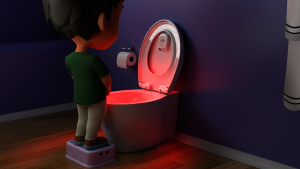
Set Boys Up for Complete Success
Boys’ toilet training success depends on recognizing that basic toilet use is just the beginning, not the end goal. True success includes accuracy, etiquette, consideration, and pride in bathroom responsibility – skills that require specific readiness markers beyond general toilet training criteria.
When you wait for boy-specific readiness signs and begin training with the complete skill set in mind, you avoid the common pitfalls that create months or years of bathroom behavior problems. Boys who start with proper readiness foundations typically master not just independence, but the consideration and responsibility that prevent family conflicts and build lifelong good habits.
The investment in proper readiness assessment pays dividends in faster training, better outcomes, and boys who take genuine pride in their bathroom behavior. Trust the process, wait for comprehensive readiness, and start your son’s toilet training journey with the foundation for complete success.
For additional guidance, explore our related articles on teaching toilet seat etiquette, using visual cues effectively, general readiness signs, and gender-specific strategies.


